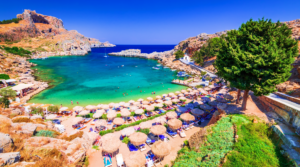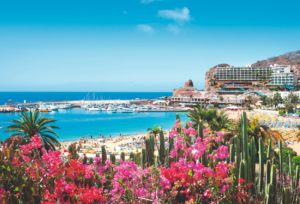Europe is the land of many languages, many people and just as many flavours. And though some of the dishes perfected in European countries have travelled around the world and can be sampled just about anywhere, there’s nothing quite like eating the original cooked by the locals.
Some of the most famous dishes around Europe, though wildly popular nowadays, have incredibly humble beginnings. Before reaching their icon status, these dishes were made out of necessity, whipped up from cheap ingredients that were readily available at the time. Over years, they became so familiar they slowly transitioned into tradition.
Every dish has its own story. If you’ve ever stared into a plate of Greek moussaka and wondered, ‘where did this come from?’ fret no more. We’ve got you covered.
Spain – Paella
Paella has become the overarching term for Spain’s famous rice dish – the original, created in Valencia, didn’t have the seafood we find in traditional paella today. It began as a midday meal for farmers, created over the fire in a large pan. What was around – for example, rabbit and snails used to be common – dictated what was thrown in and devoured communally with wooden spoons.
The dish is named for the pan it’s cooked in, though some say it was made by a man for his lover.
Greece – Moussaka
One of the most iconic dishes in Greece, moussaka’s origins actually hail from Turkey, where the ingredients are sauteed. Depending on where you go, moussaka is prepared differently, though nowadays in Greece, moussaka consists of layered aubergine, lamb, vegetables like onions and tomatoes and a bechamel sauce. You’ll find moussaka in just about every Greek taverna, though the dish is considered a treat for special guests and holidays.
England – Sunday roast
Britain’s relationship with beef is a love story for the ages – it extends all the way back to the reign of Henry VII, when the British made a tradition out of eating beef every Sunday after church.
The beef was slow-roasted for four hours, beginning in the morning so that when families returned, it was ready to eat. For families that couldn’t afford their own large oven or spit, they would drop off the beef at their local bakers, whose ovens were free because they didn’t bake on Sundays. The Yorkshire Pudding came along to fill out the rest of the meal, when beef was scarce and people couldn’t afford bigger cuts.
Italy – Pizza
Pizza is believed to have been started in the Middle East, though it first became popularised in Naples, Italy. The city had a high density of poorer families who could only afford the most basic ingredients – lard, cheese, tomatoes, herbs and flour. Thus, modern pizza was born.
Naples is home to the first known pizzeria in history, which can still be visited today. Pizza became a hit when the owner was called upon by the King and Queen of Spain to serve them one of his famous pies – unsurprisingly, they loved it.
Belgium – Moules frites
Moules frites – the national dish of Belgium, consisting of mussels and chips – is so popular in the country, you can eat it just about anywhere, including some petrol stations. Moules frites also has a humble beginning – mussels were cheap to acquire, and potatoes were a substitute in the winter, when there weren’t any fish to be caught. Soon, people began consuming the two foods together until they became virtually inseparable.
Portugal – Bacalhau
Bacalhau is one of Portugal’s most beloved dishes, nicknamed ‘old friend’ for its steady position in the Portuguese diet. Popularised by fisherman, bacalhau is dried, salted cod. It’s been produced across the world for more than 500 years, when other preservation methods were needed pre-refrigeration. And because Portugal is a Catholic country, many consume bacalhau on days when eating meat is forbidden.
Sweden – Kottbullar
Otherwise known as ‘Swedish meatballs,’ kottbullar is a much-loved dish widely eaten around the world, and not just at IKEA. The Swedish didn’t make the first meatballs – it’s not known, exactly, where meatballs come from – but their variation has reached icon status.
In Sweden, kottbullar consists of ground beef, pork and sometimes veal, diced onions, bread crumbs, spices and a cream sauce. You’ll find them served on Swedish holidays and at smorgasbords – Swedish buffets – as meat was historically considered a luxury here.
France – Ratatouille
Sadly, Pixar’s 2007 film Ratatouille was not the origination of this famous French dish – although, maybe it’s better wasn’t perfected by rats in a kitchen. Beginning in what is now modern day Nice, ratatouille is a stew consisting of aubergine, bell peppers, courgette, onions and tomatoes, served as a main or a side dish.
The name comes from the French word ‘touiller,’ which means to ‘toss up’ – though the burst of flavours you’ll encounter when eating this popular dish will tell you it takes a little more preparation than that.






